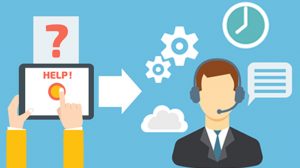As the world comes to terms with the current global pandemic, we rely increasingly on digital learning and online education. Research has shown that the global digital education market will grow by more than 30% between 2020 and 2026. This means online educators need to cater to a range of different needs and different abilities to remain relevant and competitive.
Operating in a competitive market means being able to offer the best services and to stand out from the crowd. What will become more important than simply offering education online, is offering education to a diversity of different learners and catering to different challenges. As online education and training becomes the norm, it will be increasingly important for diversity to ensure that such education and training is available to all regardless of creed, color, and any restriction of ability. There are approximately 7 Million disabled students in the US and as such it is important to think about how they will engage online if at all.
New technology offers learners with disabilities the opportunity to learn in the same environment as other learners, but only if providers are able to make content accessible. Online education must become more accessible to all learners. Learners that are partially sighted or hard of hearing should also be able to engage fully in online education through apps and software.
What Does E-Accessibility mean?
The American telecommunications act and the Act for Americans with disabilities were brought together by the 21st Century Communications and Video Accessibility Act which guarantees by law, that telecommunication devices and content must be accessible for all.
Making online learning and materials accessible to learners with disabilities is much easier than expected. Accessibility is not the same as usability – the users experience – so it requires some additional resources and being proactive rather than reactive. Using video and audio solutions can provide excellent opportunities for students with disabilities. The addition of audio descriptions to video content can allow students with hearing and visual impairments to access the content.
Audio descriptions should include more than just descriptions of the content, but also describe the setting, the actions, and facial expressions to viewers with visual impairments. While automatic captioning is available, very often these are not designed to be inclusive. They can be biased and often less inclusive than not having them. Real audio description needs to go beyond that to ensure real accessibility.
Using Software to Improve Accessibility
Accessibility is about more than just providing different versions of online content. It is possible to create one format of content that will cater for all requirements. The improvements in software make accessibility a reality through assistive technology and innovation. A great example of this is that Verbit now offers audio description solutions that will be able to guide those with sensory disabilities or impairment through your online content. Most of the content online is visual and by having an option for the sight impaired, it immediately opens up the content for a wider audience.
The COVID pandemic has not only accelerated the need for online teaching and learning but also advanced the technologies that can support students with disabilities. Choosing the right options for learners can be the difference to their future. In an environment where students are spending more time learning online, being accessible to all students can make a difference to both the providers and the students.
Before any content is uploaded for use it must be thoroughly considered as to whether this content is accessible for all and if not, then how can this be achieved. Accessibility of content online is no longer just an option, but for many it is the law.






